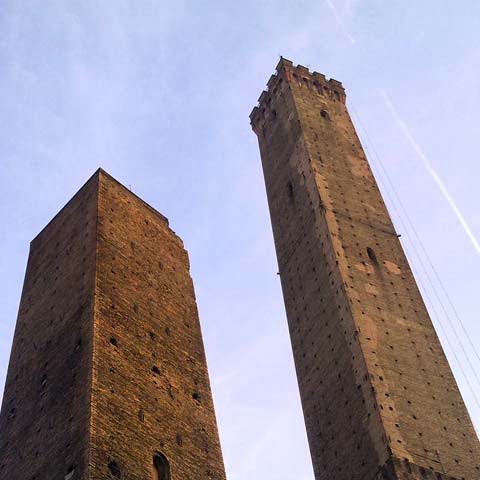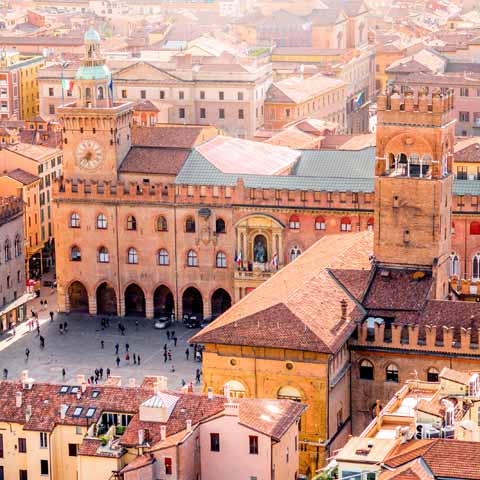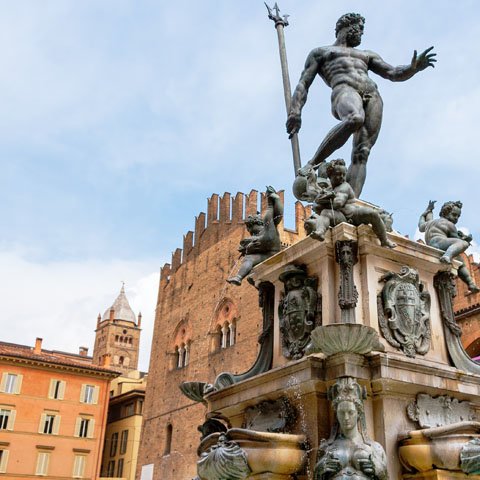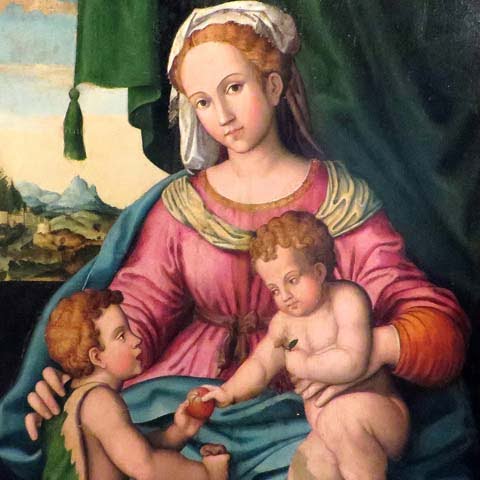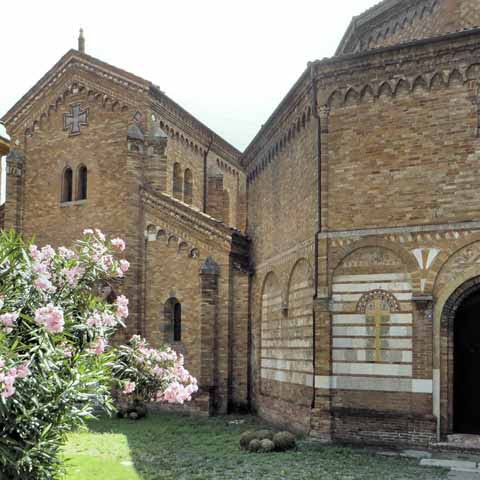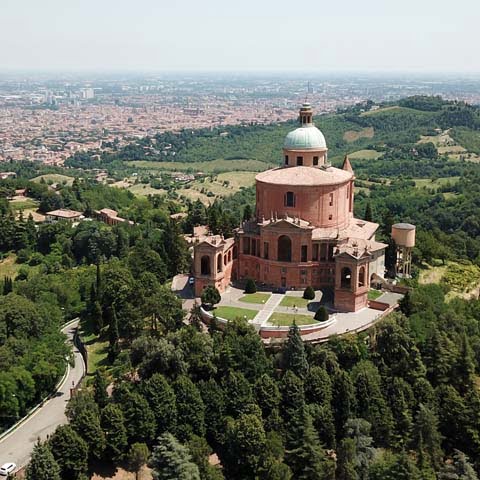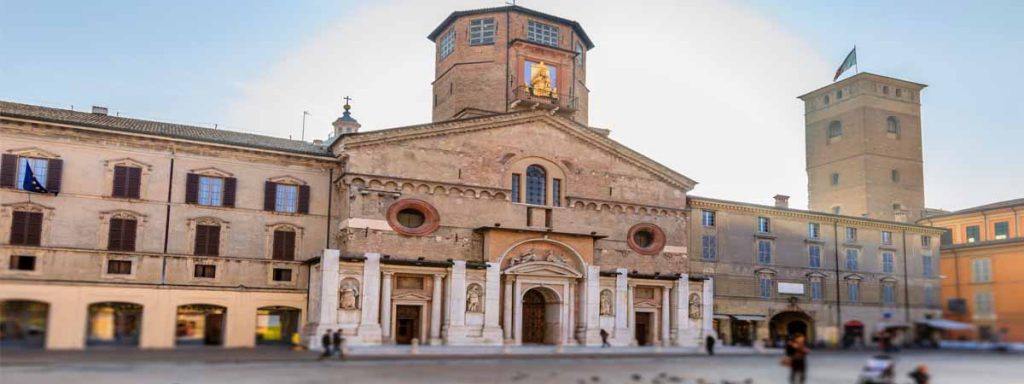Bologna is a stunning Italian city located near the northern foothills of the Apennines, between the Reno and Savena Rivers. The city’s development over the centuries has been linked to the favorable geographical position along the main communication routes between Northern and Central Italy. With the construction of the Via Emilia in 187 BC and the intensification of the trade relations with Florence, Bologna became one of the most important players in the country’s history.
Over the centuries, the city has registered a strong expansion in all directions, extending its boundaries towards nearby settlements. This expansion was majorly favored by the presence of the railway and of a good infrastructure. Along with modernization works, Bologna also succeeded in maintaining its ancient cultural traditions over time.
One of the landmarks of the city is the famous university, and the splendid artistic flowering that was never obscured over the centuries improved the city’s economy even more. The city’s commercial relationships were already lively in the Roman Age, yet despite these strengths, Bologna only registered an important demographic and topographical expansion in more recent periods. In fact, in 1890, the city was still enclosed within the medieval walls and counted less than 100,000 inhabitants. But from the beginning of the twentieth century, the city began to adequately exploit the favorable natural conditions and take advantage of the easy communication with the Po Valley and Veneto on one side, and with Tuscany on the other through the trans-Apennine roads, including the passes of Futa, Porretta, Montepiano, and Raticosa.
As a result of these commercial relations, Bologna doubled its population in only a few decades, then took advantage of the inauguration of the Apennine railway tunnel, followed by the construction of the Autostrada del Sole. At the crossroads of all important traffic routes, the strategic position helped Bologna assume a function of communication between North and Central Italy.
Besides Bologna’s strategic location, the city’s economy was also boosted over the years by an overwhelming industrial development in almost all sectors. This process was accelerated above all after World War II and led to the erection of numerous industrial complexes around the city, especially along the main arteries.
This economic development had a striking reflection, both functional and administrative, on the structure of the city. The historical nucleus assumed the position of a central business district, concentrating the vast majority of qualified financial, professional and administrative services, to the detriment of the residences. However, the area inside the medieval city walls still counts some residential zones mixed with the commercial and tertiary activities. In broad terms, the area largely retained the original medieval architecture, even if the University and some judicial complexes inaugurated new edifices.
Outside the city walls, the city consists of functional areas, including health and military services, and residential districts. After a long period of uninterrupted population growth, this prolific development culminated in the seventies, when the municipality counted half a million inhabitants. Today, metropolitan city of Bologna has over 1.5 million inhabitants. Despite these astonishing numbers, Bologna has the tendency to present itself as a lively city that does not overwhelm inhabitants or visitors.
PREHISTORY OF BOLOGNA
Excavations conducted during the mid-nineteenth century in the areas of Villanova, in the hamlet of Castenaso, and in other areas around Bologna have attested to the presence of humanoid civilizations in the area since the ninth century BC.
From this period and up to the sixth century BC, the settlement was inhabited by the Villanovan populations, and all artifacts belong to the various cultures of this civilization. Evidence scattered throughout the region suggests that the Villanovans settled in this area for practical reasons. In fact, the two rivers provided a more protected environment in a land that enjoyed a temperate climate.
The first civil organizations who settled here in the early Iron Age were dedicated to pastoralism and agriculture. Between the seventh and the sixth centuries BC, the Etruscans became interested in the region and settled their first colonies not only in Bologna, but also in other areas, including Orvieto and Bolsena.
Under the Etruscans, Bologna became an organized urban center that assumed an important role among the settlements of the Po Valley. The Etruscans conducted deep building reconstructions and changes to the Villanovan structures with the purpose of giving the city a more regular north-south orientation.
The residential buildings grew more complex and started to become more similar to those found in Etruria. Larger edifices boasted coordinated environments and were distributed around internal courtyards or equipped with outside sheds. The Etruscans also started to use more stone to the detriment of the perishable construction materials used by the Villanovans. Felsina, located on the hill that is now home to the Faculties of Engineering and Industrial Chemistry, was one of the most important Etruscan settlements. Although it occupied a slightly smaller area than most Villanovan villages, it still had a sacred area and a necropolis.
With the descent of the Gauls into the Italian peninsula between the fifth and fourth centuries BC, the Etruscans were progressively defeated and Felsina was conquered by the Gallic tribe of Boii. Traces of struggles that emerged from the archaeological excavations suggest a violent crisis in the Etruscan settlement. In the Celtic period, despite a lower density of the residences, a slow but steady development continued to interest the village. Yet, the Celtic dwellings were characterized by a less homogeneous distribution than those of the Etruscans, with modified orientations and a less organized occupation of the spaces.
Although defeated in 225 BC in the Battle of Talamone, the Gauls retained enough power and independence to act as a key ally of Hannibal in the Punic Wars. With the defeat of Carthage, the Roman retaliation led to the destruction of many Gallic and Gallo-Etruscan settlements, such as Monte Bibele, where the Etruscans and Celts established harmonious relationships. The Boii were definitively defeated by the Roman troops in 196 BC, then, in 191 BC, Publius Cornelius established the beginning of the Roman hegemony over the city.
HISTORY OF BOLOGNA
A crucial transit hub under the Roman Empire, Bologna developed into a thriving and populous municipality. But with the decline of the Empire, its development suffered a setback and the town’s size was reduced to that of a small village. The Byzantine domination partially destroyed the original edifices, but things got even worse under the Longobards. In the end, the Longobards sold Bologna to the Church, which exercised an indirect administration through its Dukes. Under the dominion of the church, the city flourished, and the situation improved even more in the twelfth century when, after a period of continuous prosperity, the authorities recognized municipal autonomy and instituted a local government in 1116 AD.
Participating in the battle of Fossalta as an ally of the Lombard League, Bologna was defeated by King Enzo, the son of Emperor Frederick II, who instituted his dominion over the city. Under his rule, Bologna lived one of its greatest periods. The city witnessed the birth of the first university in the Western world, which transformed the settlement into a true cultural capital of the Middle Ages, rivaled only by Paris. Thanks to this cultural splendor, Bologna became a true magnet for intellectuals, artists, scientists, and immigrants in general. And this demographic boom boosted Bologna to the top ten most populous cities in Europe at the end of the thirteenth century. Additionally, in 1256, Bologna was the first European city to abolish serfdom.
During the fourteenth century, the infighting between the Guelphs and the Ghibellines, more precisely between the families of Geremei and Lambertazzi, brought new challenges to the area. These struggles concluded only towards the end of the century with the triumph of the Guelphs, and this favored the progressive subjugation of the municipality to the power of the Church.
These events undermined the political balance and inaugurated a period of decline. The attempts to redeem control under the House of Pepoli and then under the Visconti of Milan led to a greater dependance of the city to the Papal State. With the consolidation of the Lordship of Bentivoglio in 1446, Bologna experienced a new period of prosperity. However, at the beginning of the sixteenth century, the city returned to the rule of the Church and remained under the Papal hegemony until the eighteenth century. This period led to the formation of a strong clerical spirit that would define the character of the settlement in the centuries to come. Under the Napoleonic domination, Bologna became the first capital of the Cispadane Republic in 1796, and then the second pole of the Cisalpine Republic, after Milan.
During the Risorgimento, Bologna was one of the driving forces of the movement of the seven liberals who acted in Romagna. In 1831, the city was nominated capital of the United Provinces of Emilia, Marche, and Umbria, escaping the Papal government. The city also assumed an active role in the events following the uprisings of 1848 and became part of the Kingdom of Italy in 1860.
At the beginning of the twentieth century, the city was affected by the spread of socialist organizations, then by clashes between the agrarians and the fascists, but above all by the development of the cooperative system. During World War II, Bologna was an active center of the Resistance and was seriously damaged by Allied bombing due to its strategic position and status as an industrial hub. After World War II, the city resumed its development which led to important economic growth from all points of view. Today, Bologna is an important industrial center but also one of the most prolific university centers in Italy and Europe. In addition, the city is well-known for its beautiful art and architecture as well as its cuisine, considered to be the best in Italy.
ARCHAEOLOGY IN BOLOGNA
From the early Villanovian settlements to the Etruscan Felsina and the Roman Bologna, archaeology is well represented in the city. Not all sites are accessible to visitors, but those that are, bring amazing testimonies concerning the city’s history throughout the centuries.
Among the most noteworthy sites are the archaeological excavations of Salabrosa and the Roman Theatre. The former is located under the Salabrosa Library and is covered by a crystal floor. The suspended platform offers unique insight into the Roman culture. Besides these peculiar sites, Bologna also boasts numerous museums. From an archaeological point of view, the most important is the Civic Archaeological Museum that houses one of the most prestigious archaeological collections in the country. Counting over 4,000 artifacts and an impressive numismatic collection, the museum is divided into spaces dedicated to the various phases of development from the earlier ages up to modern times.
The Medieval Civic Museum is dedicated to the medieval history of the city, housing numerous objects and medieval forms of art. From more modern times, the Civic Museum of Risorgimento provides a comprehensive insight into the role Bologna played during various events, but also explains the key steps of the movement. The Civic Museum of the Resistance highlights the defiance of the city to adapt to fascist ideals. Apart from these, there are dozens of other interesting museums to visit in Bologna, a city rich in archeology, history, and culture.
Don't just see Italy, live it.
Your dream trip to Italy has never been closer
No more endlessly scrolling travel sites. Our travel experts will craft the perfect, one-of-a-kind trip just for you.

300+
DESTINATIONS
We offer more Italian destinations than any travel site. Do and see more with Trips 2 Italy.
1 (of a kind)
ITINERARIES
Because your dream trip to Italy should be designed for you, not for the masses.
100%
PEACE OF MIND
From flights and accommodations, to food and activities - we take care of every detail.
